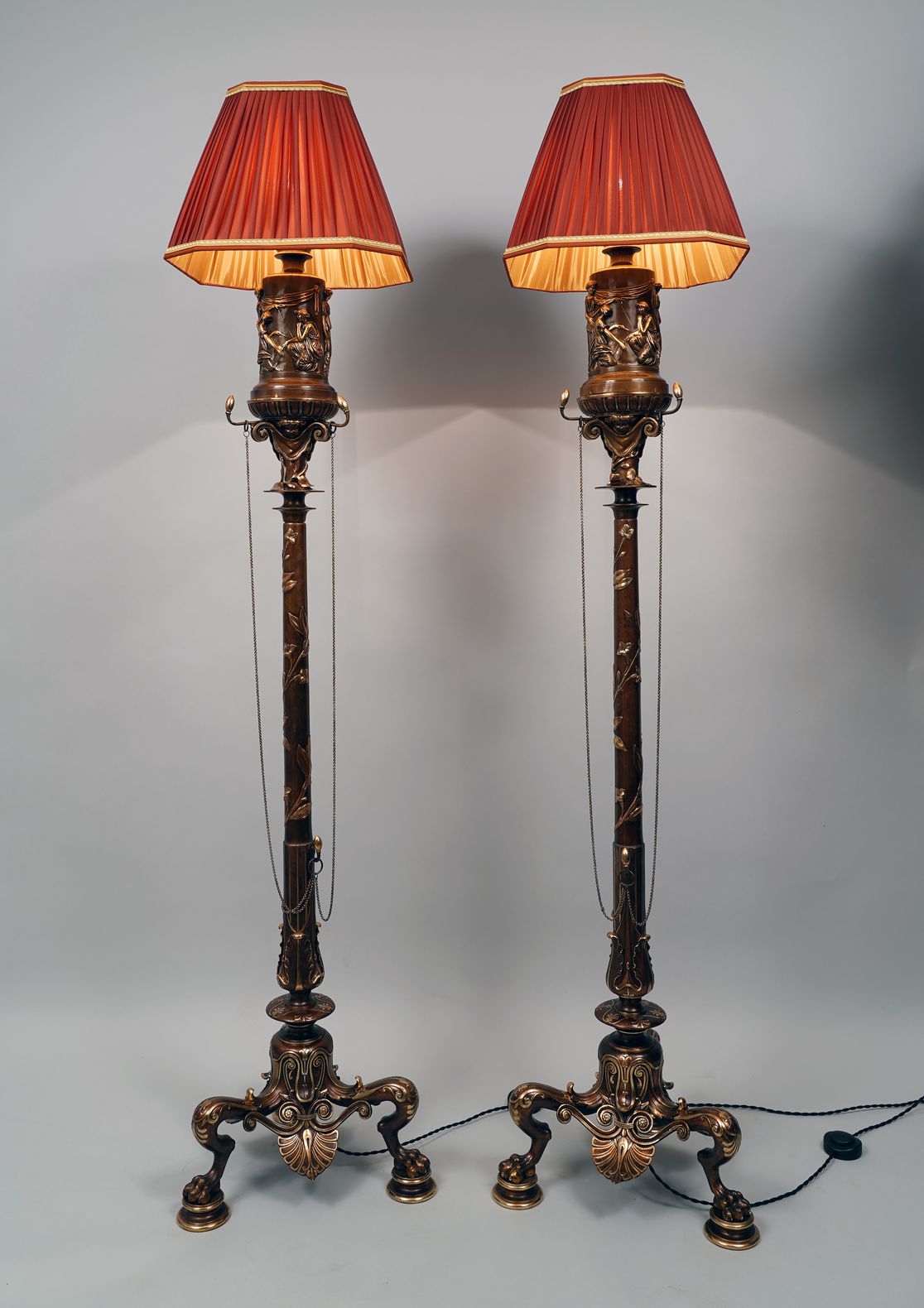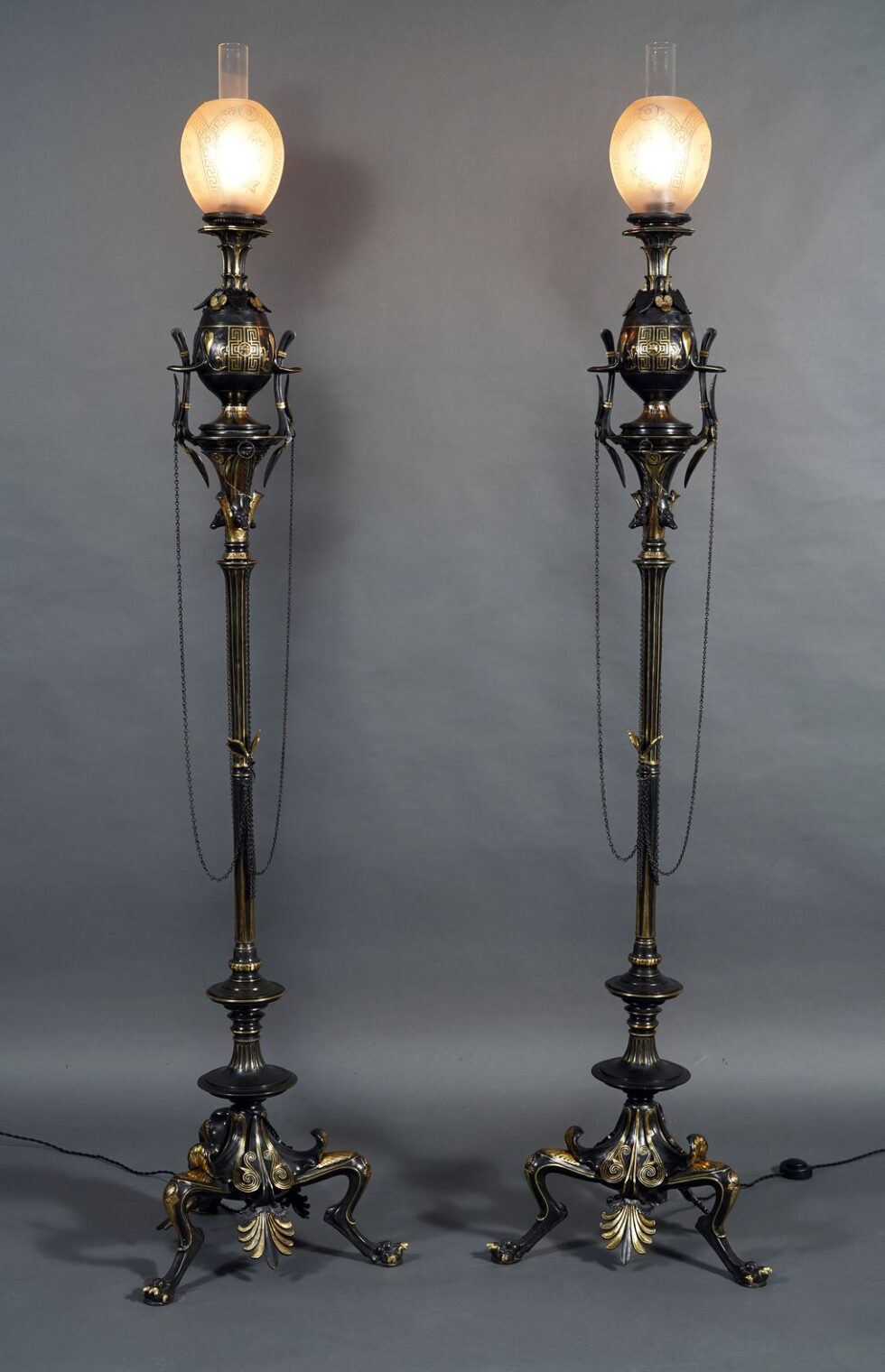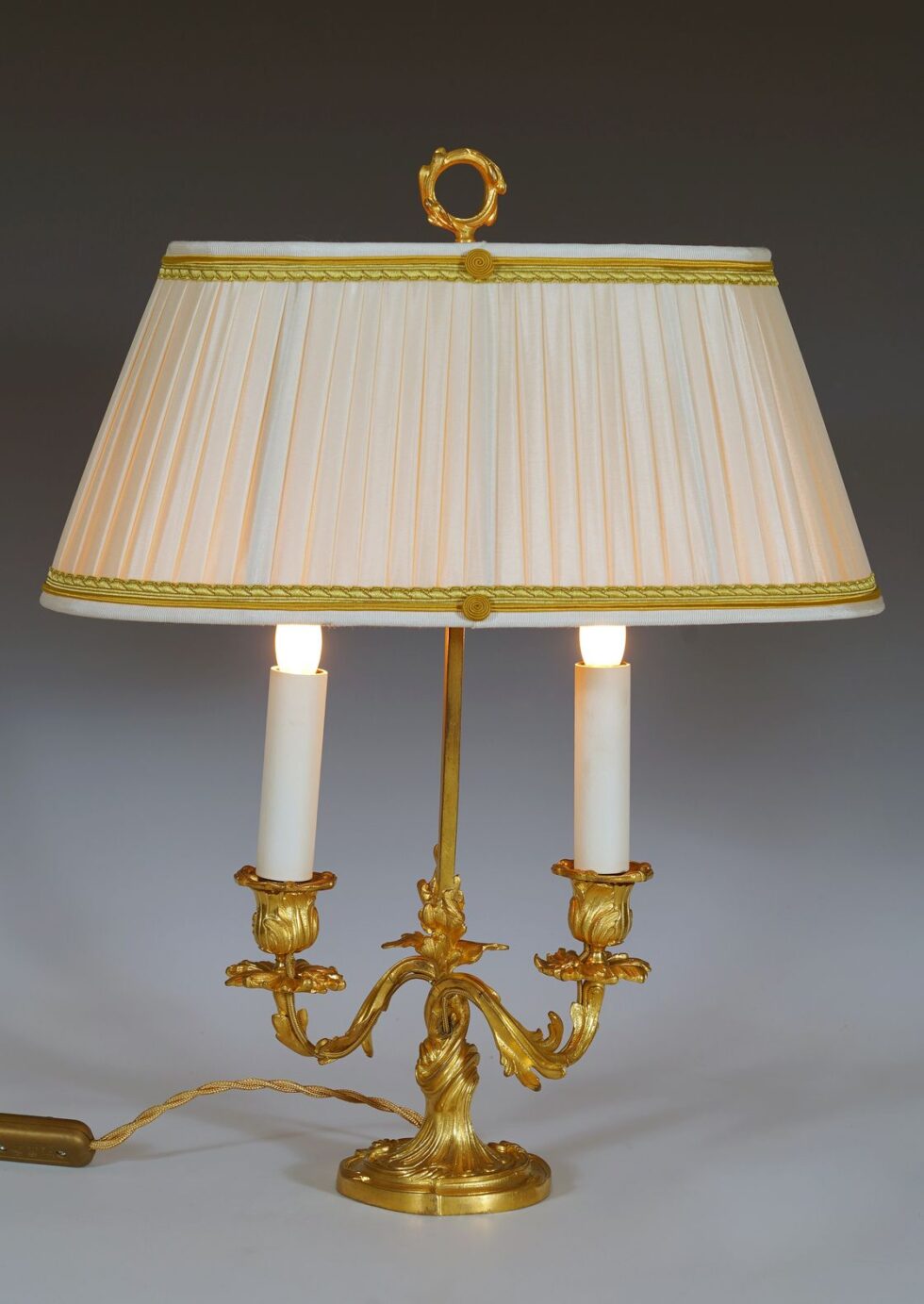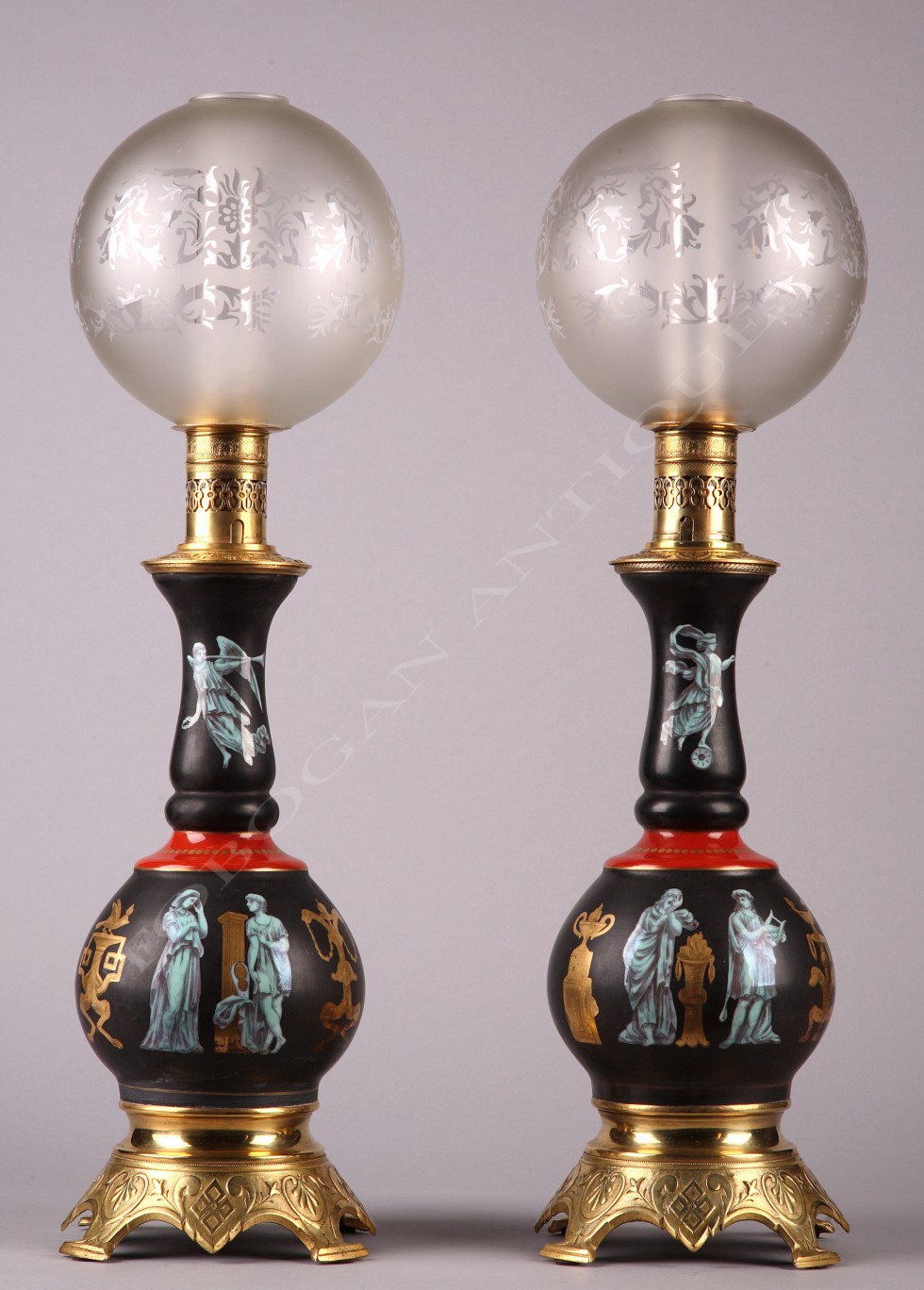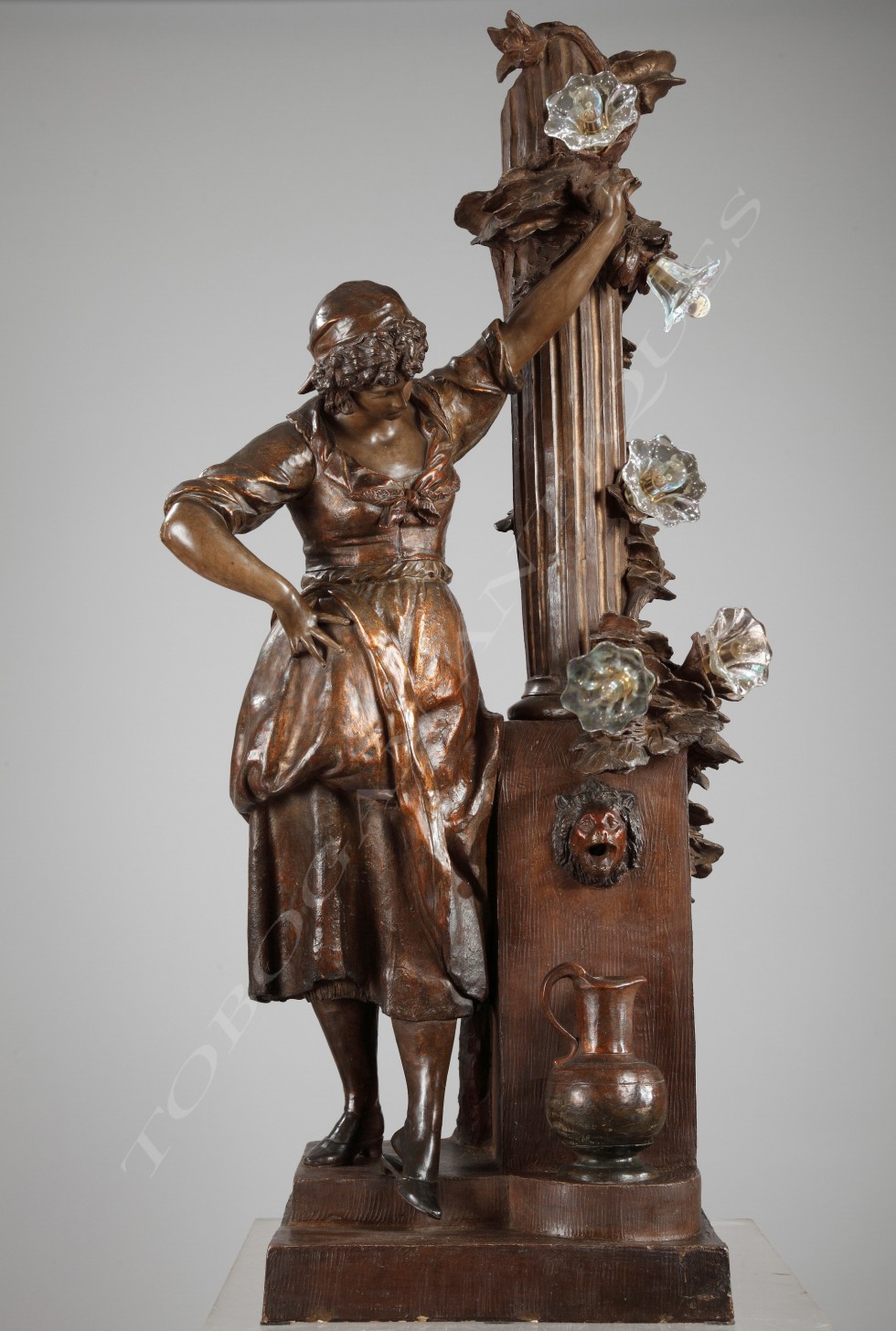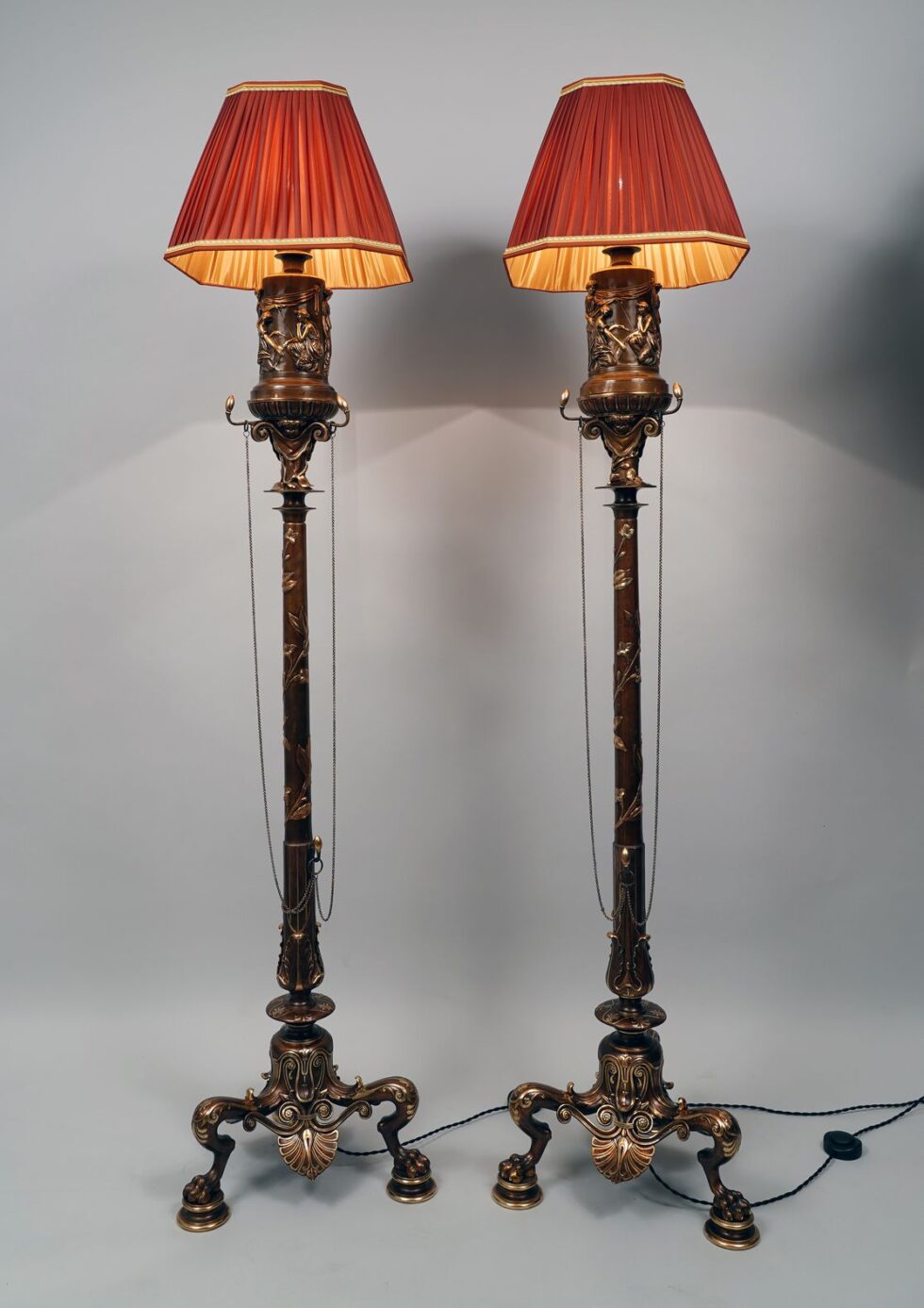Ref. 1362 & 1159
F. Barbedienne
Bronze-caster (1810-1892)
Pair of neo-Greek Floor lamps
France
Circa 1860
Signed F. Barbedienne
Height without/with lampshade : 168/185 cm (66,1/72,8 in.) ; Base : 43 x 43 cm (16,9×16,9 in.)
Beautiful pair of neo-Greek floor lamps in bronze with double patina, composed of cylindrical lamps, decorated on the body with a rotating frieze representing women dressed in the Antique style weaving and spinning, surmounted by lampshades with cut sides in red pleated silk with golden braid.
They are placed on pedestals from which hang thin chains attached to the slender shaft decorated with stylized leaves and flowers, resting on a tripod base decorated with large palmettes and ending in lion’s paws.
The stylistic repertoire used here, composed in particular of palmettes, masks, and nymphs, evokes Greek Antiquity, as does the reuse of forms of furniture and objects such as tripods and antique vases.
The rediscovery in the 18th century of the archaeological remains of Pompeii and Herculaneum allowed artists of all disciplines to draw inspiration from Antiquity while reinterpreting it.
This trend did not fade and, in the 19th century, many personalities fitted out their interiors with neo-Greek furniture, as was the case for the Maison Pompéienne built in 1856 by the architect Alfred Normand (1822-1909) for Prince Napoleon, or Empress Eugénie who bought from the Maison Barbedienne pedestals inspired by antique tripods.

Pedestal model presented by Maison Barbedienne at the Universal Exhibition in Paris in 1855. On this occasion, Empress Eugénie bought it for her bathroom in the Château de Saint-Cloud. This model pleased the Empress so much that she ordered two other pairs in 1858 for her boudoir in the palaces of Compiègne and Fontainebleau.

Photo showing a floor lamp similar to ours in Empress Eugénie’s bedroom in the Château de Compiègne (Oise), in Architecture intérieure et Décoration en France des origines à 1875, Jean Feray, Editions Berger-Levrault, 1988, p. 355
Biography
Born in 1810, Ferdinand Barbedienne started at n°30 boulevard Poissonnière in Paris one of the most famous 19th century artistic bronze casting companies. He died in 1892. In addition to his personal production, he worked for famous artists such as Auguste Clésinger, Albert-Ernest Carrier-Belleuse and Louis Barrias. At the London Universal Exhibition of 1851, Barbedienne’s firm won two « Council medals ». At the 1855 Universal Exhibition, he won a medal of honour and eleven cooperator’s medals for the work of his co-workers, such as his model designer Louis-Constant Sévin (1821-1888) and his chaser Désiré Attarge (c.1820-1878). D. Attarge won also the Crozatier Prize in 1862 and 1864, which was awarding the France best chaser, and was once again awarded at the 1867 Universal Exhibition with a Silver medal as Barbedienne’s co-worker. Jury’s report was then very explicit : « It’s impossible to show more taste in composition and more maestria in the making of these leaves and elegant flowers, all chased with so extreme delicacy ». The success of Barbedienne’s firm brought him many official commissions, such in about 1860, as Barbedienne supplied bronzes for furniture for the Pompeian Villa of Prince Napoleon, located avenue Montaigne in Paris.
Barbedienne’s production was always highly esteemed and he was, himself admired by contemporary art critics who compared him during the 1878 Universal Exhibition to a « prince of industry and the king of bronze-casting ». His glory did not decline with the passage of the time for at the Universal Exhibition of 1889 the critics thanked Barbedienne for the example he set for other bronze-casters by the perfection of his bronzes.
Contact us
Tobogan Newsletter
If you want to be up-to-date with our new acquirings you can sign up to our newsletter.

